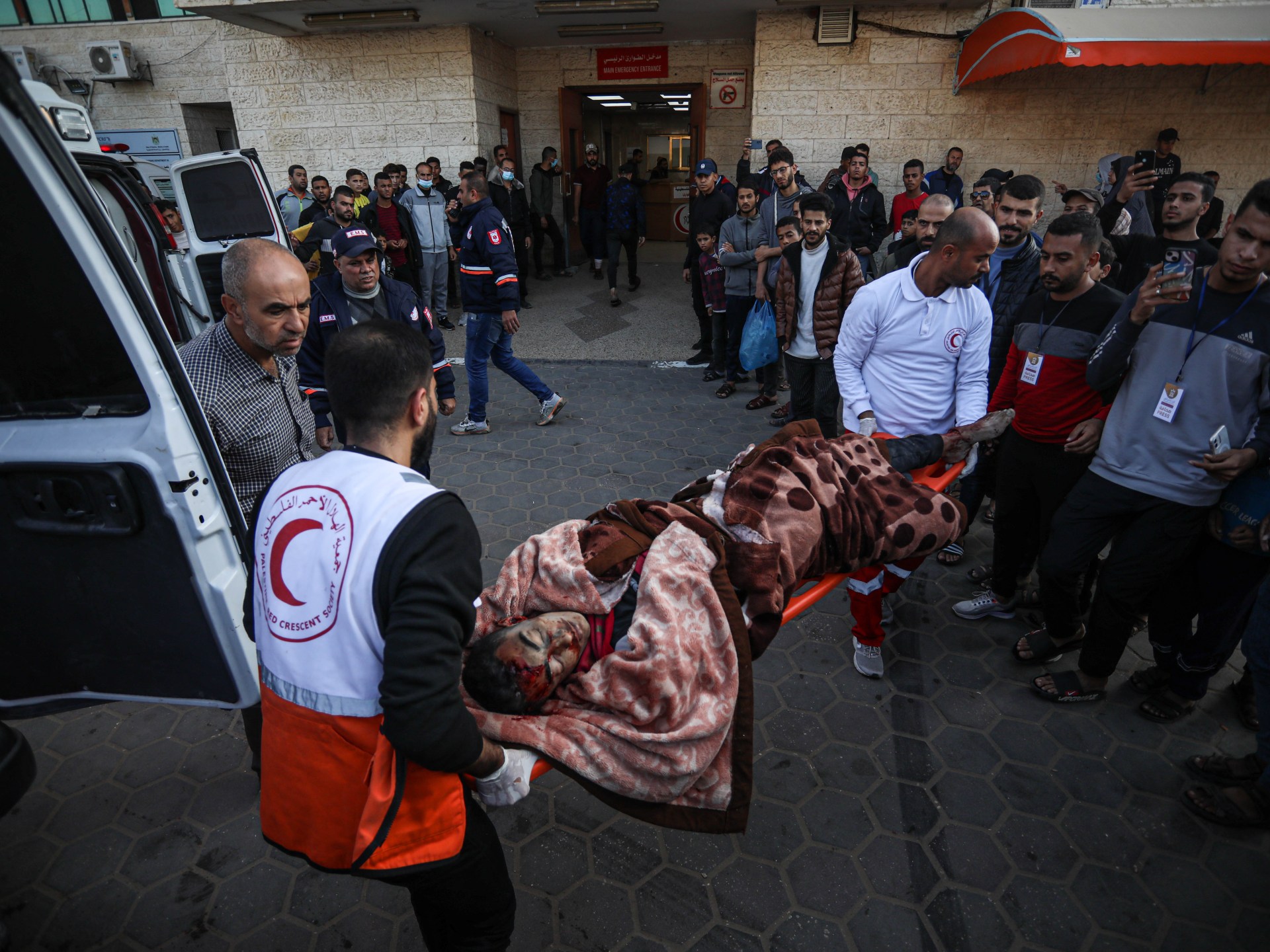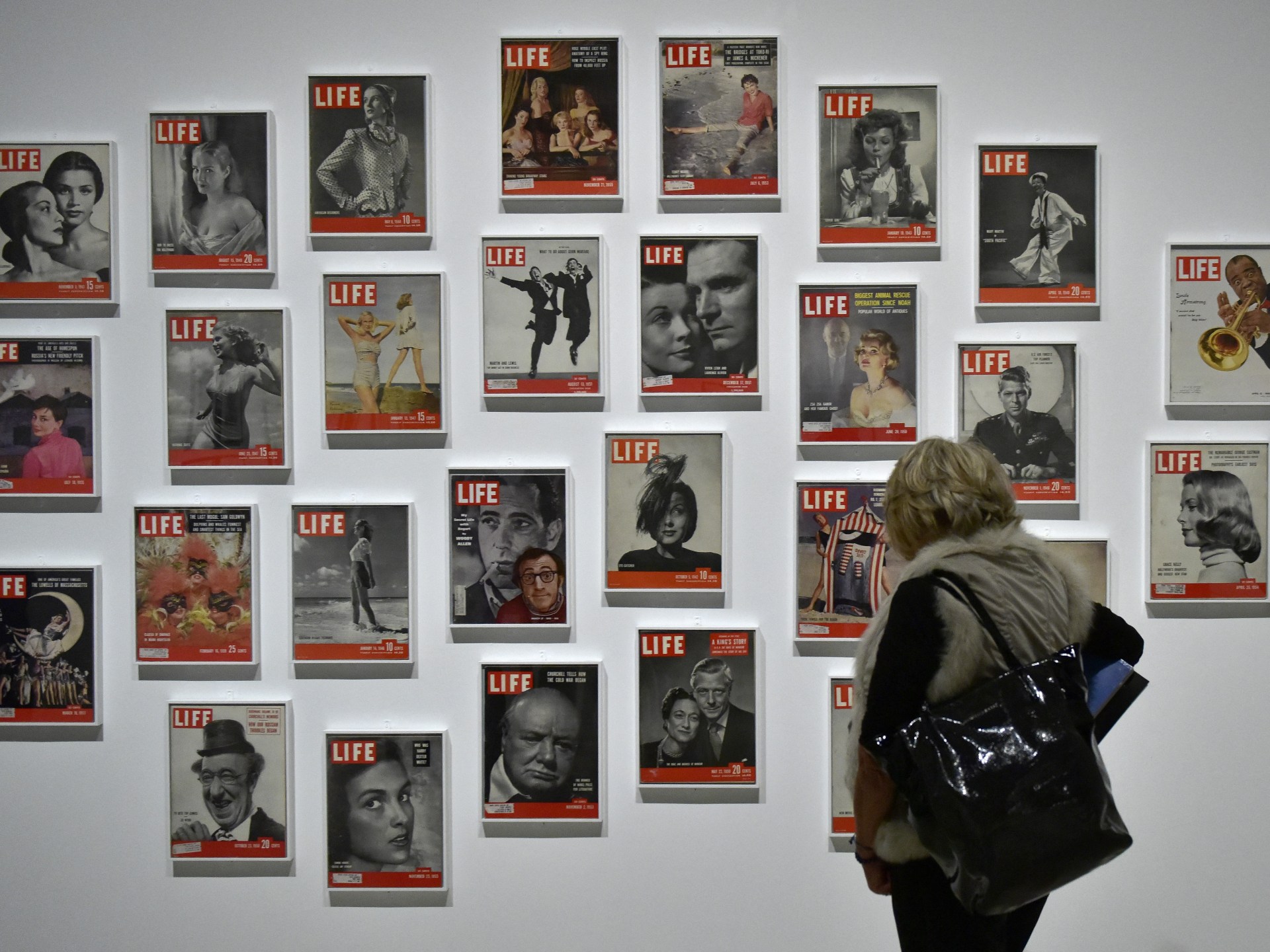Polio returns to Gaza: Where else has the virus re-emerged? | Health News
Polio has made a comeback in the Gaza Strip after 25 years, forcing the United Nations and local health authorities to launch a vaccination campaign in the Palestinian enclave ravaged by 11 months of Israeli bombardment.
Some 640,000 children below 10 years are expected to receive oral drops of the polio vaccine amid a limited pause in fighting, with campaigners saying Israel’s continued destruction of water and waste management infrastructure in Gaza are aiding the spread of the highly contagious disease.
The disease, which causes paralysis of limbs primarily in children below five years, had been nearly eradicated globally. But in recent years, it has re-emerged in several countries around the world.
So where else has the poliovirus returned and how?
What is the polio crisis in Gaza?
In mid-August, a 10-month-old boy became partially paralysed after contracting polio — the first such case in Gaza this century.
The detected poliovirus in Gaza is believed to be vaccine-derived.
Vaccine derived cases occur when the weakened virus present in oral vaccines may spread and mutate sufficiently enough to cause infections. This typically occurs over 12 to 18 months and impacts people who were unvaccinated, did not complete vaccinations, or for whom the vaccination did not work, according to Howard Forman, director of the Health Care Management Program at Yale School of Public Health.
Health experts and campaigners have blamed Israel’s destruction of Gaza’s health and sanitation infrastructure. The polio case was detected weeks after the UN health agency raised the alarm that poliovirus had been found in Gaza’s wastewater.
“If the Israeli government continues to block urgent aid and destroy water and waste management infrastructure, it will facilitate the spread of a disease that has been nearly eradicated globally,” said Julia Bleckner, senior health and human rights researcher at Human Rights Watch.
“Israel’s partners should press the government to lift the blockade immediately and ensure unfettered humanitarian access in Gaza to enable the timely distribution of vaccines to contain the unfolding polio outbreak.”
What is polio?
Polio is a highly contagious viral disease that primarily affects children five years or younger. It can cause irreversible paralysis of the limbs.
The virus – categorised as type 1, type 2, and type 3 – spreads through contaminated water or food and attacks the nervous system. The type 2 and 3 wild polioviruses were eradicated in 2015 and 2019 respectively.
“The virus spreading in Gaza is linked to a similar virus found circulating in Egypt, which traces back to the use of type 2 novel oral poliovirus vaccine used there for outbreak response,” said Kimberly Thompson, president of Kid Risk Inc, a non-profit organisation, and a policy expert with over two decades of experience modeling global poliovirus transmission.
There is no cure for polio once a person is infected. However, it can be prevented through vaccination administered orally or through injection.

Which countries have not eradicated polio?
The use of polio vaccines has nearly eradicated the disease worldwide, with only two remaining endemic countries – Pakistan and Afghanistan.
A disease is endemic when it continues to be present at a baseline level in a particular area without external factors such as cases via travel.
Since 1988, polio has been eliminated in 122 countries. Pakistan has reported 16 poliovirus cases this year, while Afghanistan has reported 14 as of July.
Where else did polio make a comeback?
Aside from Pakistan and Afghanistan, the only countries to have reported wild poliovirus cases over the last few years have been Mozambique (eight cases in 2022) and Malawi (one case in 2021) — both of which had previously eradicated polio.
Several other countries have recorded vaccine-derived cases. While there were 12 cases last year caused by wild poliovirus, 524 were linked to vaccine-derived polio, according to the US Centers for Disease Control and Prevention.
Most middle and high-income countries today use injectable vaccines that contain a dead virus. But oral vaccines are cheaper and easier to administer making it a more common choice in developing nations.
“If you are looking for a solution that is safe for the individual, the inactivated polio vaccine by injection is safer; but if you are looking to prevent cases in a population and doing so quickly, the oral vaccine is the one you choose at the moment,” said Forman.
The flip-side? Oral vaccines rely on a weakened but live poliovirus that can, occasionally, also cause polio when spread through sewage.
“Oral polio vaccines (OPV) come with some risks, but these risks are much smaller than the risks of outbreak polioviruses,” Thompson told Al Jazeera. “The key with OPV use is ensuring the achievement of sufficiently high coverage that the vaccine viruses do not continue to find susceptible individuals and cause vaccine derived cases.”
The vaccine-derived cases are of three types – depending on the type of strain of virus used in the vaccine.
The most common one is type 2, with 133 cases this year primarily in Nigeria and Yemen. Infections have also been recorded in Indonesia, and 11 other countries across the African continent, including Nigeria and the Democratic Republic of the Congo (DRC).
The US, which officially eliminated polio in 1979, also recorded a type 2 case of paralysis in Rockland County, New York, in 2022.
Six cases of vaccine-derived type 1 have been reported in Mozambique and the DRC this year.
There have been no type 3 cases since 2022 when Jerusalem recorded one case of paralysis. Type 3 and type 2 strains were also found in sewage samples across Jerusalem.
The same year, Canada, the US and the United Kingdom also found vaccine-derived type 2 polio in wastewater samples, although only the US reported an infection.
How did polio return to those areas?
One of the reasons behind the high number of vaccine-derived type 2 cases is a global shift in the type of vaccine administered.
In 2016, the type 2 virus was removed from oral poliovirus vaccines in all countries that use these vaccines, and replaced with an oral vaccine for types 1 and 3 along with one dose of an injectable shot that includes the inactivated type 2 poliovirus vaccine (IPV). Even before the switch, experts expected that using only IPV for type 2 would reduce population immunity to the type 2 poliovirus.
“The immune protection induced by IPV in populations is not as effective in preventing transmission as the oral polio vaccine,” said Thompson.
Polio infections have resurfaced due to another mix of reasons as well, say analysts – from vaccine hesitancy to reduced immunisation campaigns due to conflict or global health crises, such as the COVID pandemic.
Often, parents refuse vaccines being administered to their children out of mistrust, and the reasons for this mistrust can differ based on region.
In sub-Saharan Africa, decades of at times controversial medical experimentation has contributed to a belief that the region is a testing ground for new vaccines. There is also a prevalence of conspiracy theories that vaccines are a guise for substances that reduce the African population or introduce satanic controls in the world.
The idea that polio vaccines are part of a Western plot was further fuelled in Pakistan when reports surfaced that the US agency CIA organised a fake polio vaccination drive to capture al-Qaeda leader Osama bin Laden.
Other common reasons for refusal include lack of trust in the vaccine quality and fear of side effects.
There has also been an overall gap in polio vaccine drives in recent years. Conflict and political instability have hindered vaccination efforts in countries such as Sudan, according to the World Health Organization.
Many countries also halted or postponed polio vaccine drives during the COVID-19 pandemic owing to restricted movement, a diversion of resources, and the disrupted supply chain.
Increased global mobility, particularly from countries with ongoing polio transmission, has also continued the spread of the virus.
Check out our Latest News and Follow us at Facebook
Original Source






